Wasps have generally earned themselves a bad reputation. But despite their occasional aggression, these insects play an important role in the ecosystem.
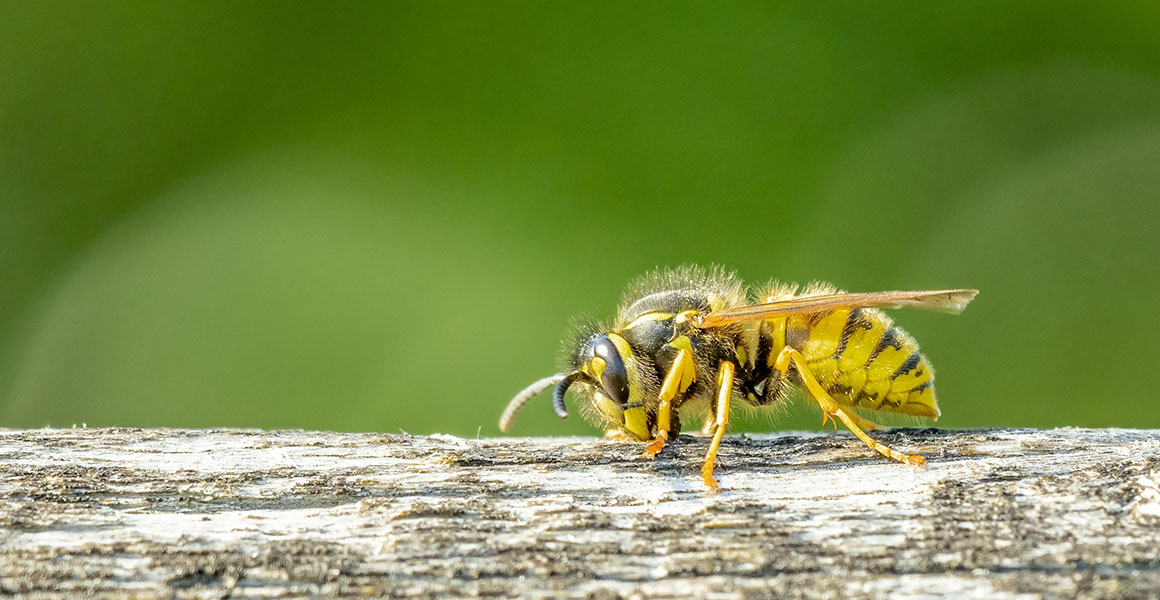
This wasp is chewing on a wooden fence to collect material that will form part of its nest. © Keith Hider/ Shutterstock
There are over 7,000 species of wasp living in the UK, comprising a huge variety of solitary and social species. The majority are parasitoids, which have young that eat insects or spiders alive. But you may be more familiar with the black and yellow social species.
Colonies of social wasps are considered annoying pests - they often nest in manmade structures and deal out painful stings if you get too close. Yet despite our grievances, the ecosystem actually relies on these underappreciated insects.
So what are the benefits of wasps?
How do wasps help us?
Wasps are probably best known for disrupting summer picnics, but they are actually very important in keeping the ecosystem balanced, providing us with natural pest control.
Without wasps, the world could be overrun with spiders and insects. Each summer, social wasps in the UK capture an estimated 14 million kilogrammes of insect prey, such as caterpillars and greenfly. Rather than being a pest, these important insects are a gardener’s friend.
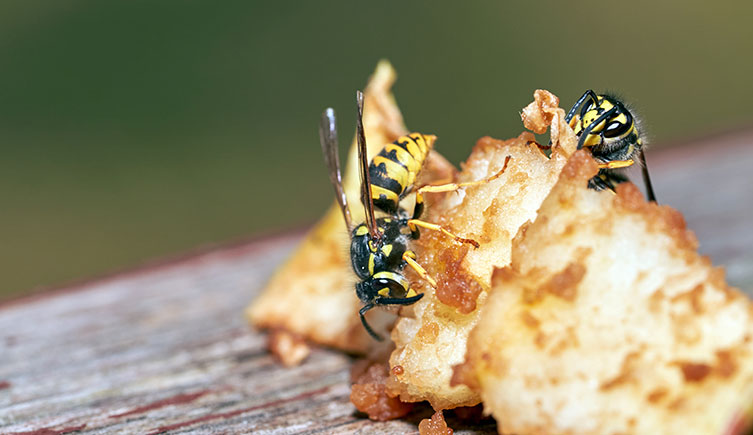
A pair of wasps feeding on a pear. Adult wasps only feed on sugars but they hunt other invertebrates to feed to their offspring. © Jonas Vegele/ Shutterstock
Our wasp expert Dr Gavin Broad, says, ‘Wasps are generally apex predators - so if they’re not doing well, it indicates that there is something wrong with the world.’
Wasps are hugely beneficial to their native ecosystems due to the sheer amount of insects they capture. But their voracious appetites can cause problems if a species spreads or is introduced to new areas and their numbers aren’t kept under control, such as in New Zealand, where there are no native social wasps.
‘Where common and German wasps have been accidentally introduced to New Zealand, they've been stripping caterpillars out of forests. This is having a huge ecosystem impact and the native birds have been declining.’
What do wasps eat?
Adult wasps don’t eat the prey they kill - they feed it to their young, known as larvae. Social species capture insects, chop them up and carry parts back to the nest.
Some solitary species are more sinister. For example, most spider wasps, such as the tarantula hawk, paralyse arachnid prey using a venomous sting. Their larvae then eat the victim alive. There are almost 5,000 species of spider wasp worldwide, including 44 species in Britain.
Another example are the solitary wasps known as velvet ants. Female velvet ants lay eggs on the pupae of other species. When their eggs hatch, the young wasps devour their defenceless host.
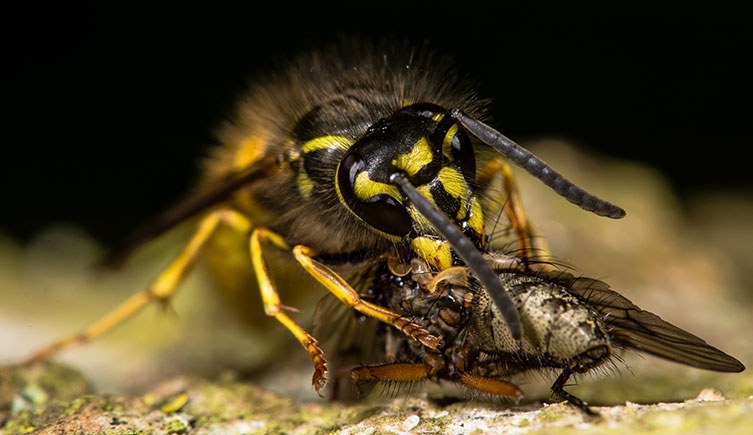
A common wasp, Vespula vulgaris, captures a fly, which it will chop up and feed to its young © IanRedding/ Shutterstock
Instead of eating insects and spiders, adult wasps - both social and solitary - only feed on sugars. In the wild, sugars come from flower nectar and honeydew produced by aphids. Wasp larvae also produce a sugary liquid that the adults consume.
‘There is also a lot of sugar at pubs and picnics. Adult wasps don’t live very long, so they don’t really need protein. They’ve just got to load up on carbs,’ explains Gavin.
Do wasps pollinate plants?
As they are hunting for nectar, wasps can also become accidental pollinators by travelling from plant to plant carrying pollen. While their contribution to pollination may not be as substantial as bees’, wasps still play a valuable part.
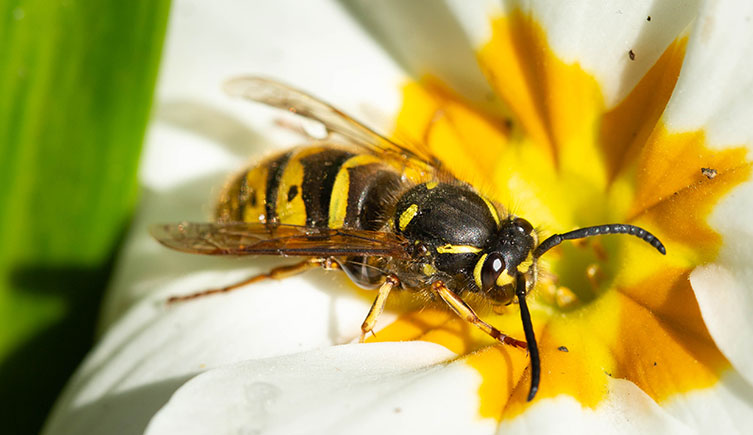
Adult wasps feed on sugary flower nectar. Like bees, wasps also pollinate the flowers they visit. © Maria Wan/ Shutterstock
Do wasps hibernate?
The lives of wasps in the UK are dictated by the seasons. They need large amounts of insects to feed their young, so are only active in the warmer months, when food is readily available.
The worker wasps of social species die off late in autumn, while recently emerged females hibernate. They spend the cold months in sheltered areas such as lofts and animal burrows.
But only some will survive the winter. Those that do, emerge when the weather warms up. These female wasps begin to form new colonies. After building a small nest, the new queen lays eggs of the first workers.
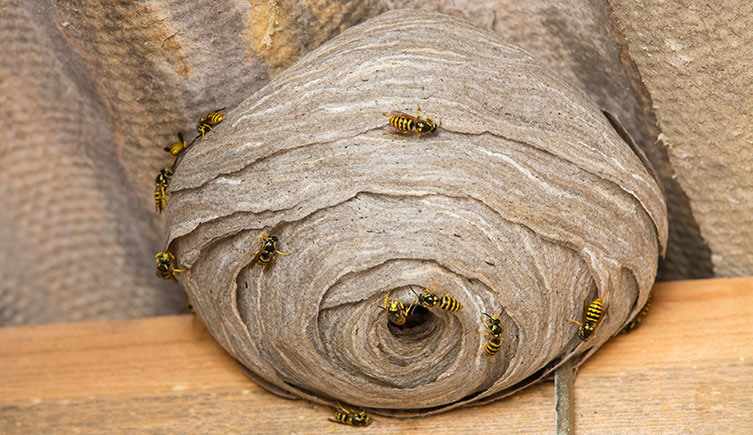
Social wasps on the outside of a large paper nest © FCG/ Shutterstock
Gavin says, ‘At the beginning of April and May the colony is really small, with just a few workers. Growth is slow until you get to a certain mass, then it’s almost exponential growth.’
As the colony increases in size, so does the ability of the workforce to forage and feed the young, thus maintaining a cycle of growth.
Ancestors of the wasps most commonly found in the UK nested in cavities. This has resulted in species that thrive in manmade structures such as sheds and lofts. This sometimes makes wasps a pest problem when the colony mass increases.
But in Britain, colonies never reach their full potential as their growth is curtailed by winter. In parts of the world where winters are milder, colonies can continue to grow.
‘I think the biggest common wasp nests are in Australia,’ says Gavin. ‘There can be as many as two million workers. When you get a huge nest, you can imagine the large biomass of insect prey they're taking in.’
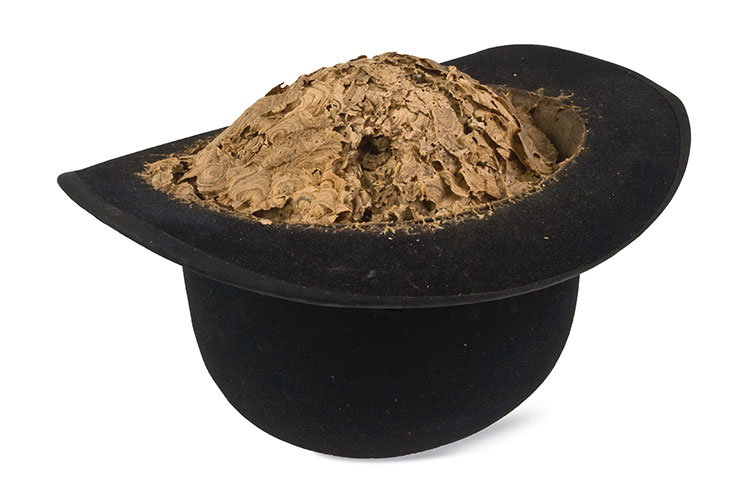
Social wasps build nests in a variety of environments, both natural and manmade. This nest inside a bowler hat was built by a colony of common wasps.
Wasp stings
Wasps use their venomous sting to subdue prey and defend their nest. They also use it to defend themselves.
Wasps sometimes sting us as they see us as a probable threat, even if we don’t really pose one.
Unlike honeybees, wasps don’t lose out by stinging us. Honeybees sacrifice their lives as their stings have a set of tiny barbs that hook into the skin.
'Honeybees have weak attachments in their abdomen. So when it pulls away the sting remains attached to you and it basically pulls away the entire muscle system around the sting. It’s a bit brutal,’ explains Gavin.
Wasps have smooth stings that can easily be pulled out of the skin by the insect - with the exception of a few South American species. If they run out of venom, they simply make more.
Which wasp has the more painful sting?
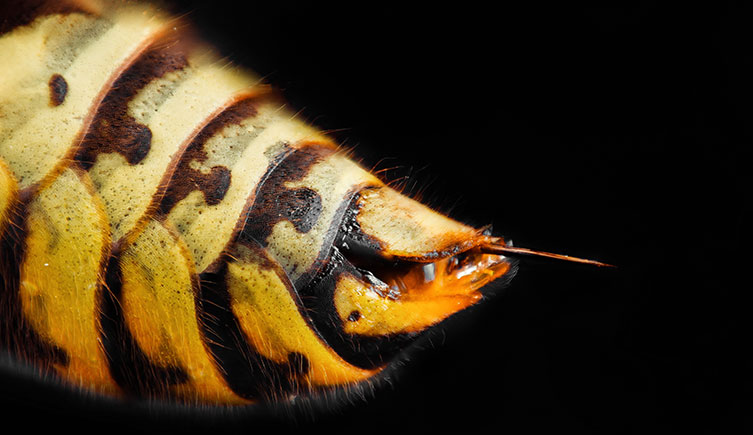
Honeybees’ stings have barbs on them, whereas wasps’ are smooth. © Dmytro Khlystun/ Shutterstock
Common British wasps
If you see a wasp in Britain, it will most likely be either the common wasp, Vespula vulgaris, or the German wasp, Vespula germanica. These species are very similar in size and colour - predominantly yellow with black markings.
Gavin adds, ‘The red wasp, Vespula rufa, and the tree wasp, Dolichovespula sylvestris, are also common. The Saxon wasp, Dolichovespula saxonica, only arrived in Britain in the 1980s and it’s mainly common in the south.’
‘The European hornet, Vespa crabro, is quite common in parts of the south, but it is more of a woodland species.’
The European hornet is the UK’s only native hornet species and is the largest of our social wasps. Their bodies are also yellow with a dark pattern. The similar colouration and pattern shared by a number of social wasps is a form of Müllerian mimicry. This is where well-defended species have evolved to mimic each other’s warning signals to their mutual benefit.
European hornets have a sting that is more painful than other social wasps in Britain, usually leaving the stung area throbbing for a few hours.
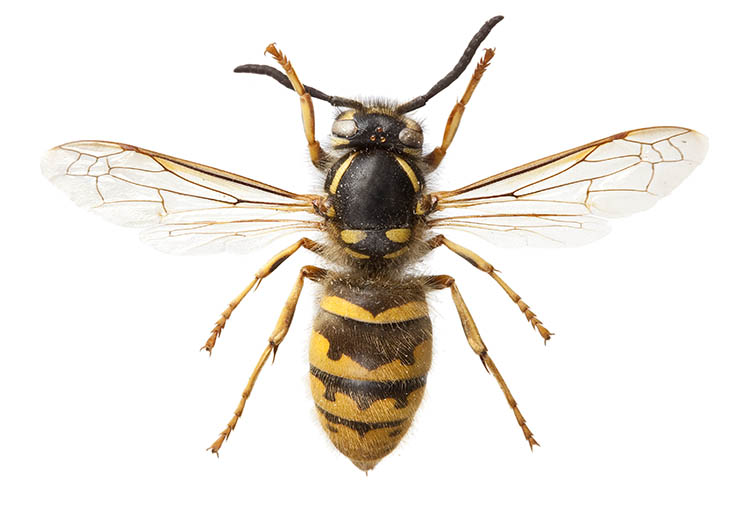
A common wasp specimen from the Entomology collections we care for.
Since 2016, there have also been annual sightings of the yellow-legged hornet, Vespa velutina, in the UK. This wasp is also known as the Asian hornet and is known for being a specialised honeybee predator.
Although wasps may cause us strife in the summer months - and leave some to question the point of them - these insects play a crucial role in maintaining harmony in the ecosystem.
We certainly would not be able to cope in a world without wasps.

British wildlife
Find out about the plants and animals that make the UK home.
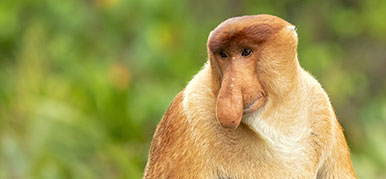
What on Earth?
Just how weird can the natural world be?


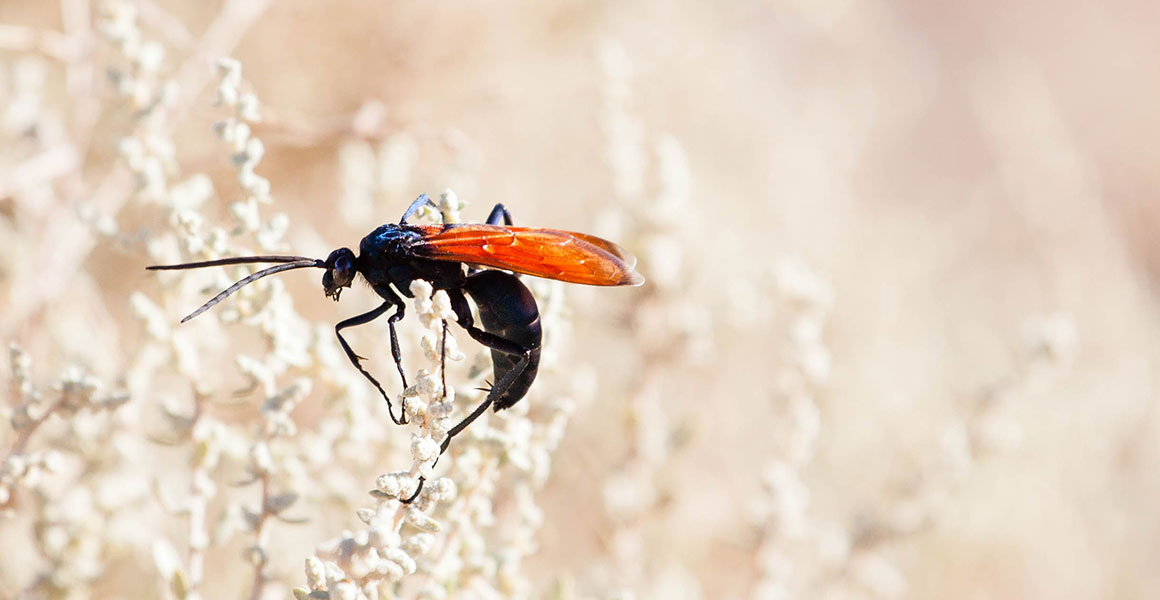
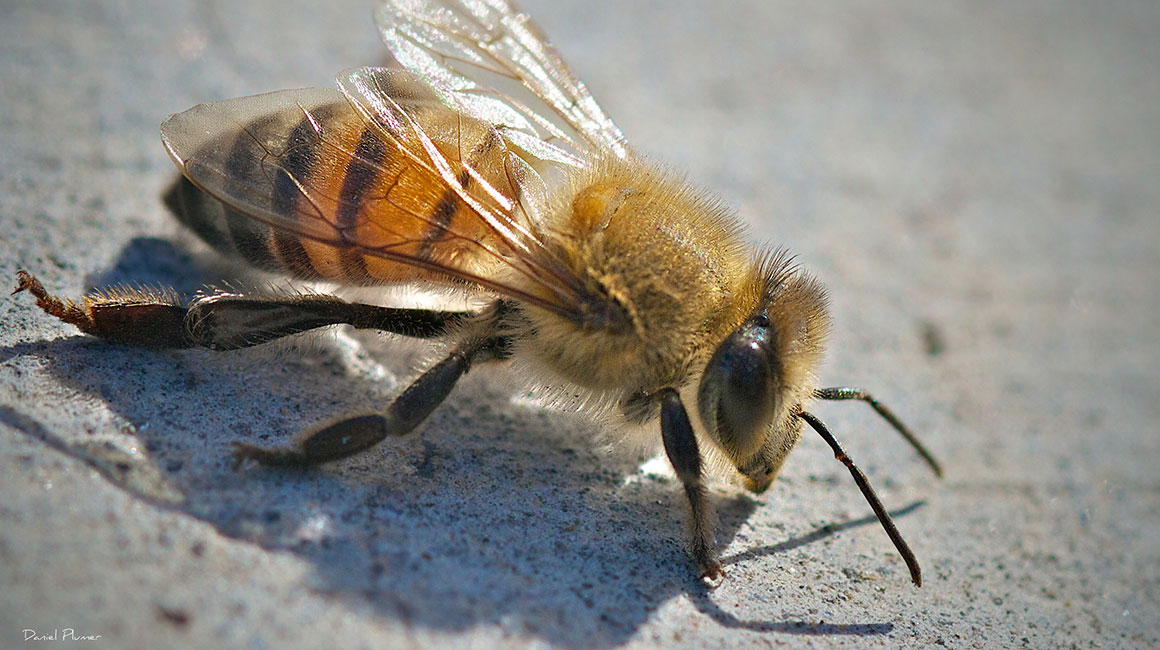
Don't miss a thing
Receive email updates about our news, science, exhibitions, events, products, services and fundraising activities. We may occasionally include third-party content from our corporate partners and other museums. We will not share your personal details with these third parties. You must be over the age of 13. Privacy notice.
Follow us on social media